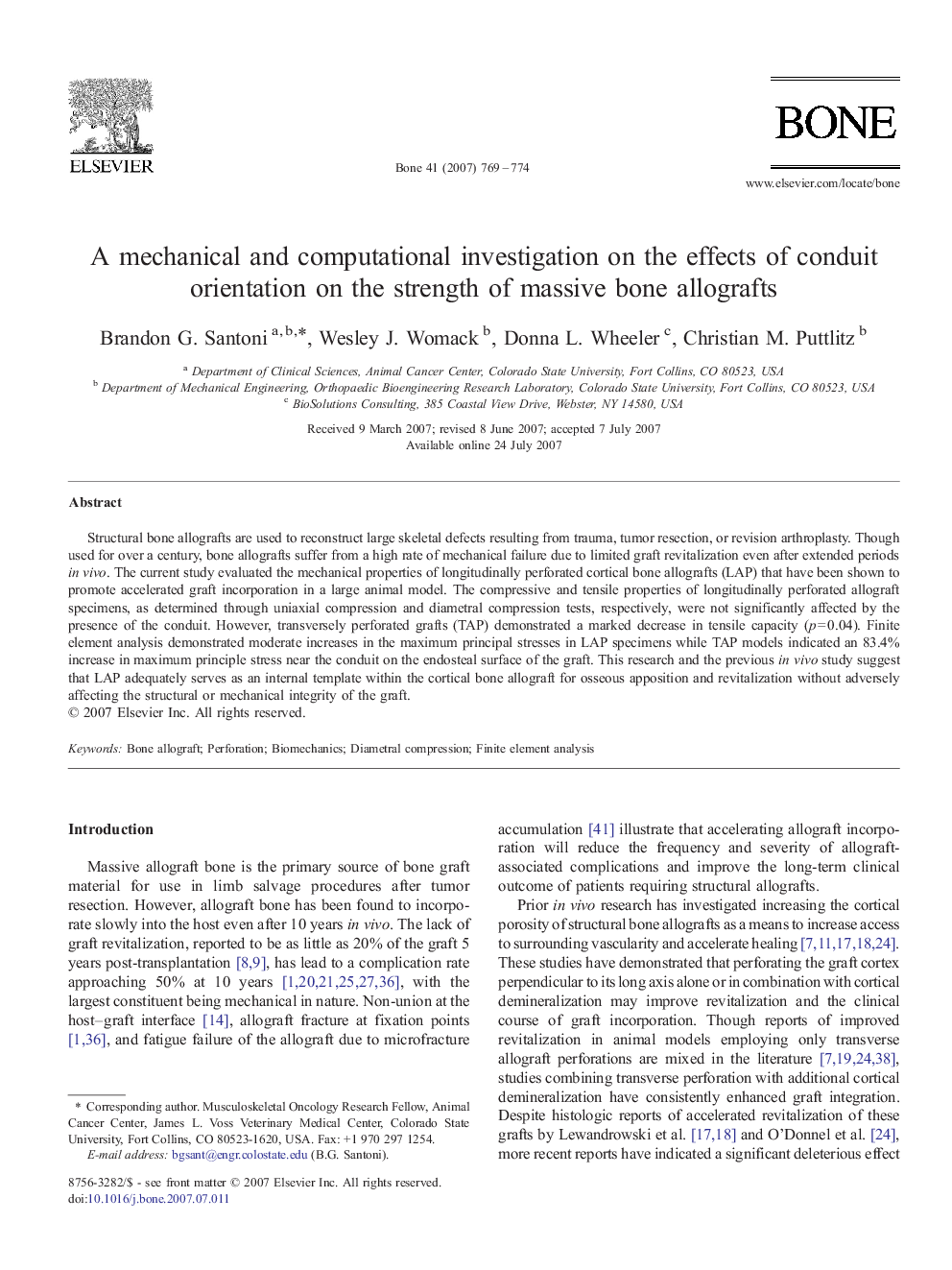| Article ID | Journal | Published Year | Pages | File Type |
|---|---|---|---|---|
| 2781493 | Bone | 2007 | 6 Pages |
Structural bone allografts are used to reconstruct large skeletal defects resulting from trauma, tumor resection, or revision arthroplasty. Though used for over a century, bone allografts suffer from a high rate of mechanical failure due to limited graft revitalization even after extended periods in vivo. The current study evaluated the mechanical properties of longitudinally perforated cortical bone allografts (LAP) that have been shown to promote accelerated graft incorporation in a large animal model. The compressive and tensile properties of longitudinally perforated allograft specimens, as determined through uniaxial compression and diametral compression tests, respectively, were not significantly affected by the presence of the conduit. However, transversely perforated grafts (TAP) demonstrated a marked decrease in tensile capacity (p = 0.04). Finite element analysis demonstrated moderate increases in the maximum principal stresses in LAP specimens while TAP models indicated an 83.4% increase in maximum principle stress near the conduit on the endosteal surface of the graft. This research and the previous in vivo study suggest that LAP adequately serves as an internal template within the cortical bone allograft for osseous apposition and revitalization without adversely affecting the structural or mechanical integrity of the graft.
